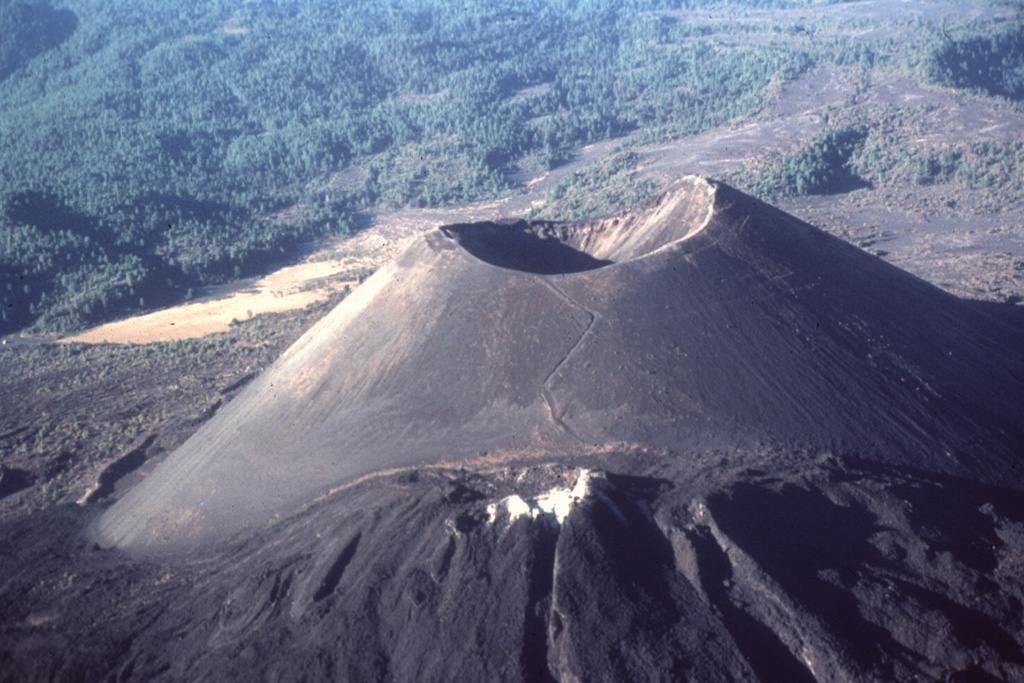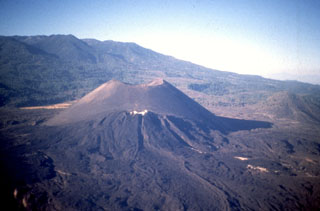Global Volcanism Program | Image GVP-05805

By the end of the 9-year-long eruption of Parícutin, the new scoria cone had risen 424 m above the surface of the original cornfield. The 900-m-wide oval-shaped cone is elongated in a NW-SE direction and is truncated by a circular 280-m-wide crater. The western peak (right) is the highest point on the crater rim. The NE-flank peak of Nuevo Juatita is in the foreground with its top covered by white minerals from fumaroles, and was the main source of lava flows during the last five years of the eruption.
Photo by Jim Luhr, 1997 (Smithsonian Institution).
![]() This image is made available under the Public Domain Dedication CC0 license, but proper attribution is appreciated.
This image is made available under the Public Domain Dedication CC0 license, but proper attribution is appreciated.
Galleries: Scoria Cones
Keywords: scoria cone | crater | vent | lava flow

Michoacán-Guanajuato
